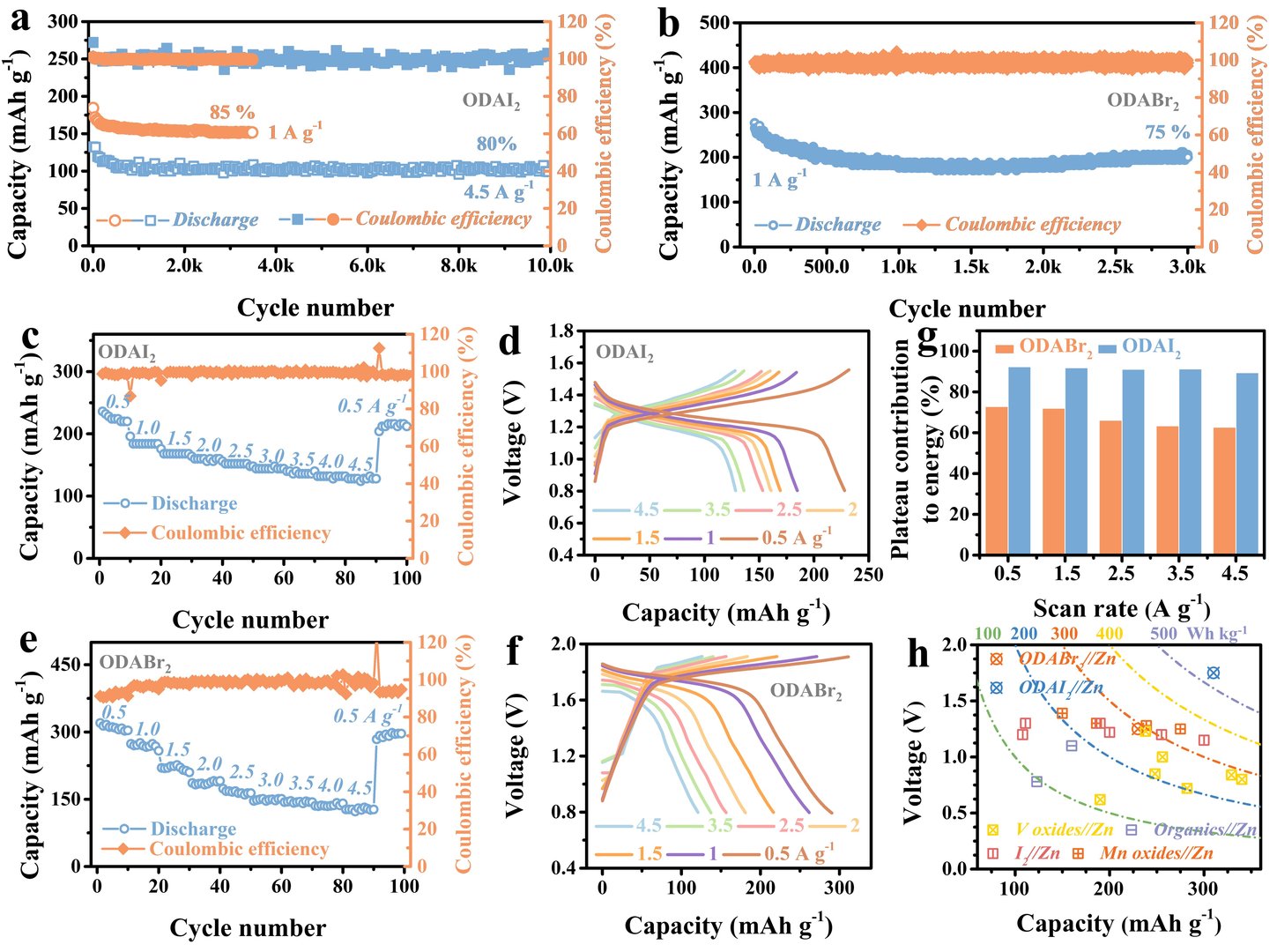

Fig. 1 Electrochemical performance of identical ODABr2//Zn and ODAI2//Zn batteries. (a) Prolonged cyclic performance of ODABr2//Zn battery at 1 A g-1. (b) Prolonged cyclic performance of ODAI2//Zn battery at 1 A g-1 and 5 A g-1 (c) Rate capability of ODABr2//Zn battery in the range of 0.5-4.5 A g-1. (d) The corresponding GCD curves of ODABr2//Zn battery. (e) The rate capability of ODABr2//Zn battery in the range of 0.5-4.5 A g-1. (f) The corresponding GCD curves of ODABr2//Zn battery. (g) Calculated contributions of the plateau regions to energy output at different rates. (h) Comparison of capacity vs. average voltage of this work to reported aqueous batteries, including I2-metal, Mn oxides//Zn, and V oxides//Zn, organics//Zn systems.
Opportunity
In the field of safe energy storage, aqueous rechargeable Zn ion batteries are one of the most promising solutions. Elemental halides are attracting particular interest as promising electrodes for safe energy storage. Due to their high redox potential and capacity, iodine and bromine are the most competitive cathode candidates. However, these two halogens suffer from physicochemical drawbacks—the inherent volatility of iodine and the corrosiveness of liquid bromine can result in suboptimal instability and undesirable leakage. There is therefore ample opportunity to further improve redox battery chemistry.
Technology
This invention describes a series of Zn-halogen batteries with fast and durable redox performance. The Zn-halogen battery comprises a cathode (the designated halide organics), an anode (Zn foil), aqueous electrolyte (aqueous Zn salt-containing solutions), and conductive substrates of electrodes (carbon nanotube paper or cloth). In particular, the patent describes a new universal halide substitution strategy by protonation treatment that can achieve various safe halide-adjustable organics with highly reliable electrochemical reversibility. This results in polar organic chains with strong host–guest interactions that can effectively imprison the various halide species throughout the redox reactions. This means that the effective immobility of polyhalides is realized and the undesired shuttle behaviour of polyhalides is suppressed.
Advantages
- Low cost and tailorable halide organics
- Halide organics eliminate the instability and safety hazards of elemental halide cathodes
- Zn-halogen batteries with organic cathodes exhibit distinct redox features and complete redox depth
- Superior energy storage prospects: excellent cycle life and near-theoretical capacity
Applications
- High-performance halide organic cathodes with highly reliable electrochemical reversibility for Zn-halogen batteries. Zn-halogen batteries have numerous utility energy storage and electric vehicle applications.
- Excellent potential in redox battery chemistry for safe and cost-effective electrochemical energy storage




